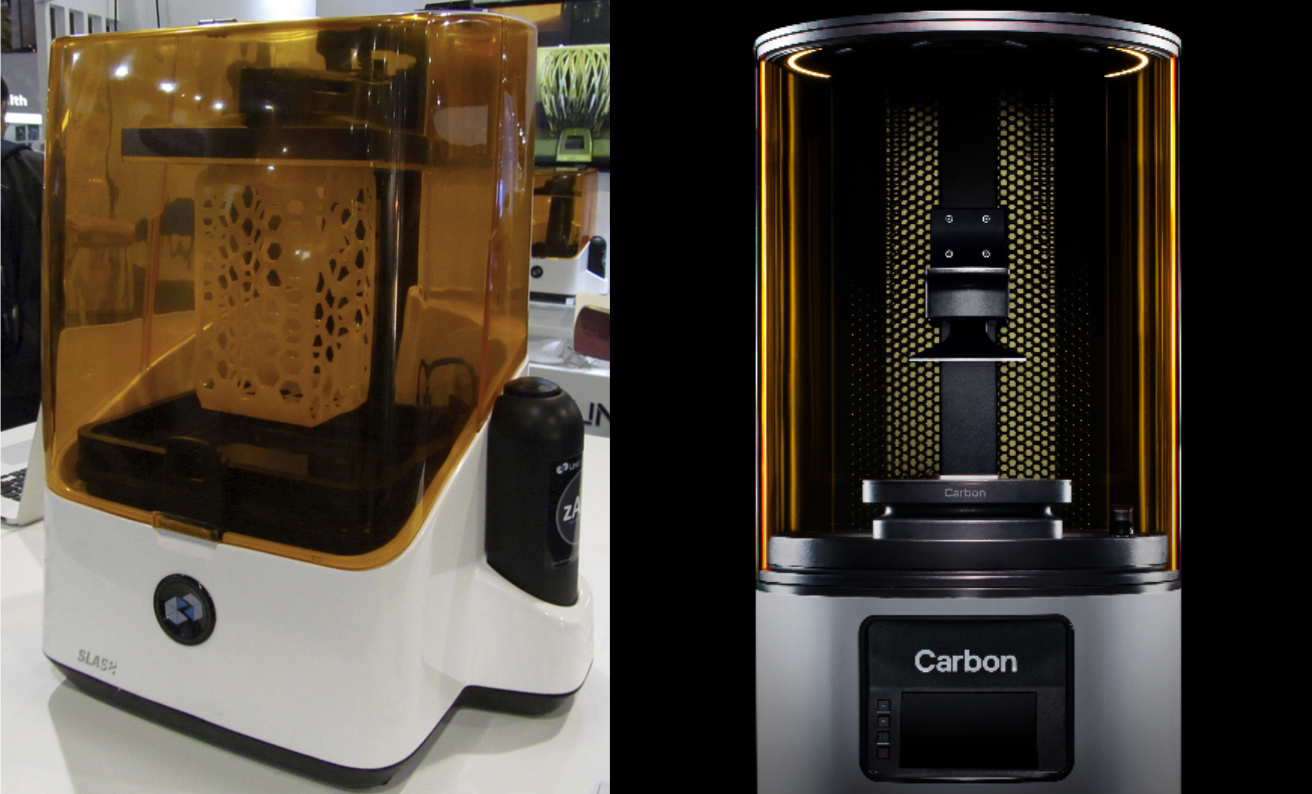I’ve noticed several comments and queries about our recent post comparing Carbon’s M1 to UNIZ’s SLASH and thought I’d clarify some aspects.
The two companies have both launched desktop-sized resin-based 3D printers that present a key advantage: very high speed 3D printing. They’re not the only ones marketing high speed resin 3D printers recently, but the analysis below would be similar for any others.
A few days ago we posted a piece suggesting that UNIZ may have trouble competing with Carbon due to their enormous investments. Some readers believe that the question is moot as the UNIZ machine seems to provide very similar performance, yet is priced at “normal” levels, while the Carbon M1’s total cost of operation is expected to be dozens of times higher. No contest, right?
Not necessarily so. The market being addressed by Carbon is not hobbyists, it’s corporations. And corporations have more factors to consider when purchasing than just the performance / price ratio.
One serious consideration often examined by corporations making a commitment to a technology is the viability of the vendor. In a large corporation, it’s usually a lot of work by many people to execute a purchase. There may be Request For Purchase (RFP) processes, legal review of contracts, multiple presentations to decision makers and much more non-technical stuff. Stuff that’s expensive and distracting in terms of labor. Thus, large companies often don’t want to re-purchase items, if say, the vendor goes out of business.
Therefore it’s often true that a company may evaluate a purchase option on the vendor’s ability to survive during the lifetime of the equipment for support and expansion. In the case of Carbon, their massive investment clearly demonstrates they’ll be around, simply because they can’t reasonably spend all that money for quite a while. In comparison, UNIZ would rate far lower than Carbon on this measure.
A second aspect is awareness, and this is something that Carbon has clearly been working strongly on. With their TED talk on speedy 3D printing, the company instantly took a much higher profile in the eyes of the media. Subsequently I see tons of stories mentioning Carbon, usually from media not particularly familiar with 3D printing. This coverage causes awareness of Carbon’s brand among manufacturers and others who may not know much about the topic. UNIZ will be challenged to catch up on brand awareness.
But once companies are aware of Carbon, they could potentially become clients. That’s where Carbon’s large investment comes in: they can easily fund a massive sales force to reach out into every nook and cranny to make sales based on the extensive brand awareness. Even better, the Carbon pricing allows for sufficient financial margin to pay heft commissions to sales staff, making it easy to attract sales personnel.
Carbon also has the financial capability of organizing mass production facilities: they can not only contract factories to make the machines, but can also afford to hire experts to ensure it’s done correctly, unlike some other 3D printing companies.
That’s why I believe Carbon could beat UNIZ in the market, in spite of the huge difference in user cost. It’s a matter of marketing and sales – in addition to the technology – that drives corporate success.
That all said, there are 3D print operations that are quite aware of the price differential and may not have the purchasing constraints that some corporations have. They may be more in a position to select UNIZ product, if UNIZ has the ability to make sales and produce sufficient quantities of equipment.


